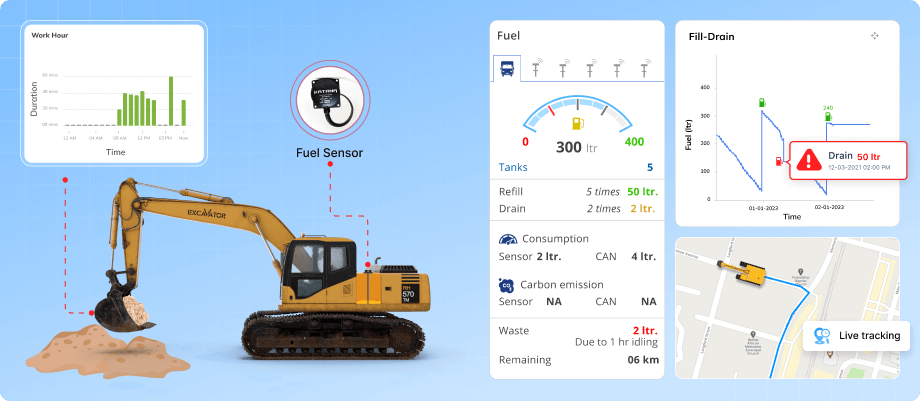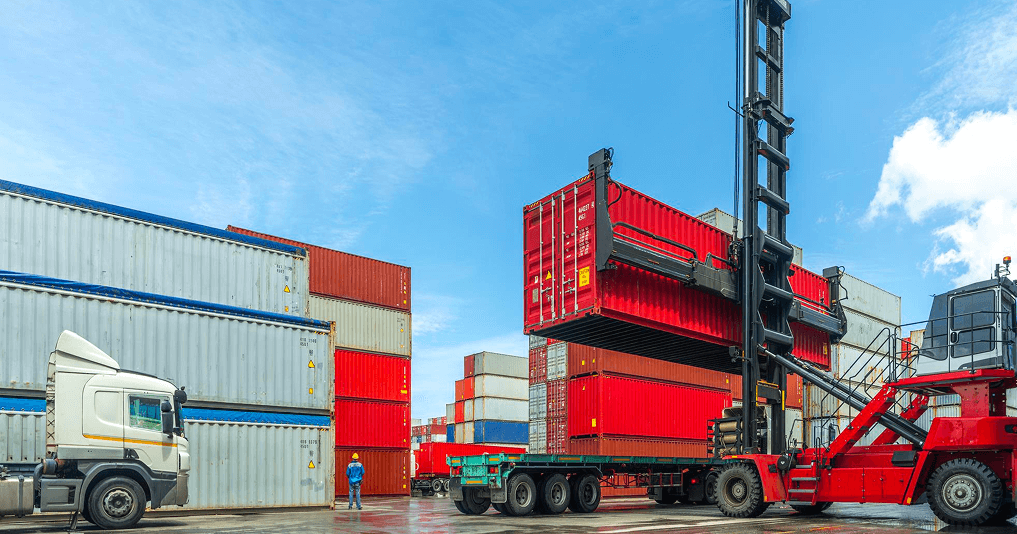Construction fleets include dumpers, excavators, concrete mixers, and other heavy vehicles working across different sites. These assets face high wear, frequent relocation, and fuel misuse risks. Without proper tracking and maintenance, project timelines are affected and operational control becomes difficult.
Managing vehicle operations in the construction industry
Introduction
Challenges
- Lack of site-wise visibility: Construction vehicles move across multiple job sites every day. Without live updates, managers don’t know where each vehicle is or whether it’s in use. This slows down planning and delays coordination between teams.
- Fuel misuse and loss: Fuel is filled manually on-site, often without proper records. There’s no way to know how much fuel was added, when, or if it was used for work. This leads to frequent fuel loss and overspending.
- Uneven vehicle usage: Some vehicles run all day while others remain idle. Without tracking engine hours or usage data, it’s hard to balance workloads. This increases wear on specific vehicles and wastes available resources.
- Irregular maintenance: Vehicles often miss scheduled servicing. There’s no system to alert teams when a service is due. As a result, breakdowns happen suddenly, causing delays and higher repair costs.
- Manual job and driver assignment: Jobs and drivers are assigned manually, often over calls or messages. This leads to confusion, slow dispatching, and sometimes assigning tasks to the wrong vehicle or driver.
Solution
- Live tracking with map overlays: Track every vehicle and machine in real time. Use map overlays to see which assets are active, idle, or delayed—across all job sites—on a single screen.
- Fuel monitoring with instant alerts: Install fuel sensors to capture fill and drain events. Get alerts for sudden drops or irregular usage. This helps control fuel loss and keeps refueling records accurate.
- Usage reports for every vehicle: Get detailed reports on engine hours and movement. See how much each vehicle is used, and rotate assets based on actual working time.
- Automated maintenance reminders: Set alerts based on mileage or engine hours. Get notified before service is due, so vehicles are maintained on time and stay in good condition.
- Job and route optimization tools: Assign jobs to the right driver and vehicle with smart planning tools. The system looks at location and workload to reduce delays and confusion.
Results
- 30% improvement in asset utilization: Usage reports helped identify idle vehicles and balance workload across sites, reducing resource wastage and improving equipment availability.
- Better fuel control and cost savings: Accurate tracking of refueling and real-time alerts reduced unrecorded usage. Site-wise fuel loss dropped, helping teams stay within fuel budgets.
- Fewer breakdowns and smoother operations: Timely maintenance alerts allowed teams to service vehicles before issues occurred. This reduced emergency repairs and kept projects on schedule.
Let’s Move Forward, Together
Share your details and we’ll guide you from here.




